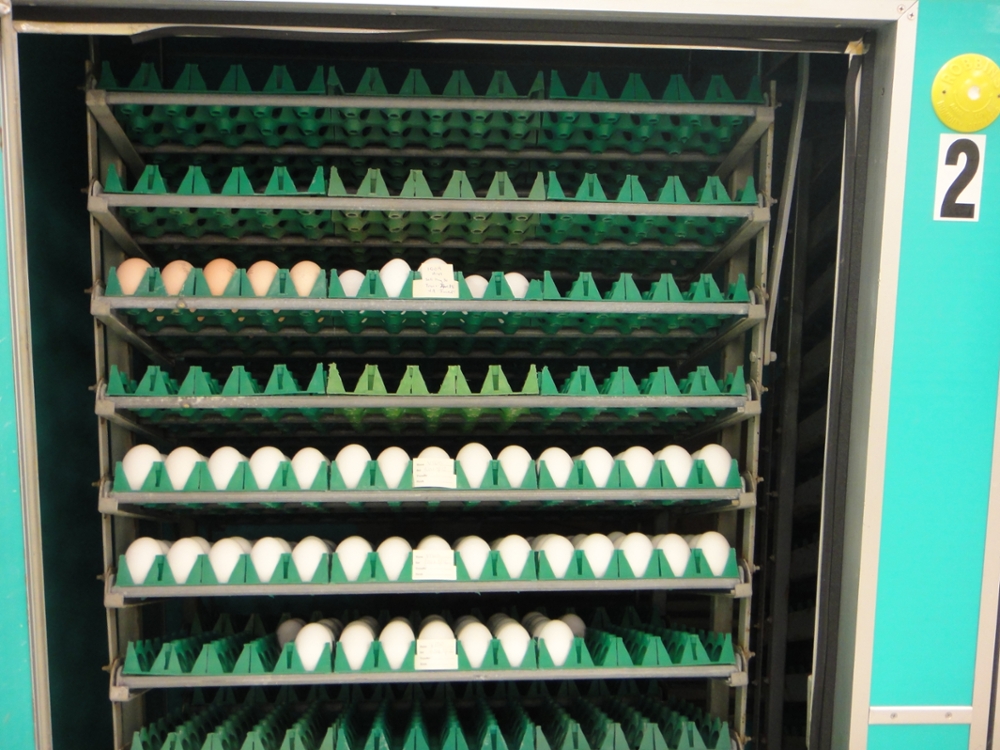
Poultry Research and Teaching Unit
Located on the University of Saskatchewan campus, the Poultry Research and Teaching Unit houses a commercial layer flock, broiler unit, turkey unit, plus a small hatchery. The Poultry Research and Teaching Unit consists of three buildings: the brooding and rearing barn, the adult barn, and the hatchery. A total of ~3000m2 of space are available for nearly 43,000 birds each year to support research in poultry nutrition, management and welfare.
Hatchery

Two incubators (4300 eggs each) and three hatchers (1220 eggs each) service research and undergraduate teaching needs. The hatchery also allows the unit to maintain two special chicken lines: Barred Plymouth Rocks, and an epileptic, mixed-strain chicken.
Gnotobiotic Facility

Supporting research in microbial ecology of the GIT, 4 isolators (and designated lab area) allow for a controlled and clean environment. Shower-in facilities are available.
Small Floor Facility

Houses up to 20, 3x3m pens capable of containing 100 commercial broilers or 20-40 commercial turkeys per pen (depending on gender and market age).
Every pen is equipped with an infrared camera and feed/water measuring equipment, which collect data as frequently as every second.
Large Floor Facility

With the flexibility to install up to 12 (2.3 x 2 m) pens per room, 9 identical rooms contain a maximum total of 108 replicate pens, holding up to 70 broiler chicks per pen. A full room houses up to 1000 broilers and up to 325 turkeys (based on density, gender and market age).
Each of the 9 rooms are independently controlled for both lighting program and environmental conditions. Each room is capable of housing infrared cameras.
Adult Cage Facility

The Adult Cage Facility is a conventional 3-tiered cage system housing 6000 commercial hens.
Replicate units consist of 12 hens each, and currently total 120 units, with the potential to expand.
5 infrared cameras, on tripod, are available
Bioassy Cages

128, 51x51x46cm cages, housed in 2 tiers, allow for small scale research, housing up to 600 commercial broilers, for up to 35 days.
A row below the cages allows for collecting excreta samples in feed and ingredient digestibility research. The top tier of cages can support individual containers for measuring water intake.
Animal and Poultry Science Researchers
Henry L. Classen, NSERC-IRC Chair in Poultry Nutrition
Natacha Hogan, Pathological and toxicological effects of contaminant exposure
Rex Newkirk, Ministry of Agriculture, Research Chair in Feed Processing Technology
Karen Schwean-Lardner, Management and nutrition on behavior, welfare and production
Andrew Van Kessel, Nutritional physiology and intestinal microbial ecology

